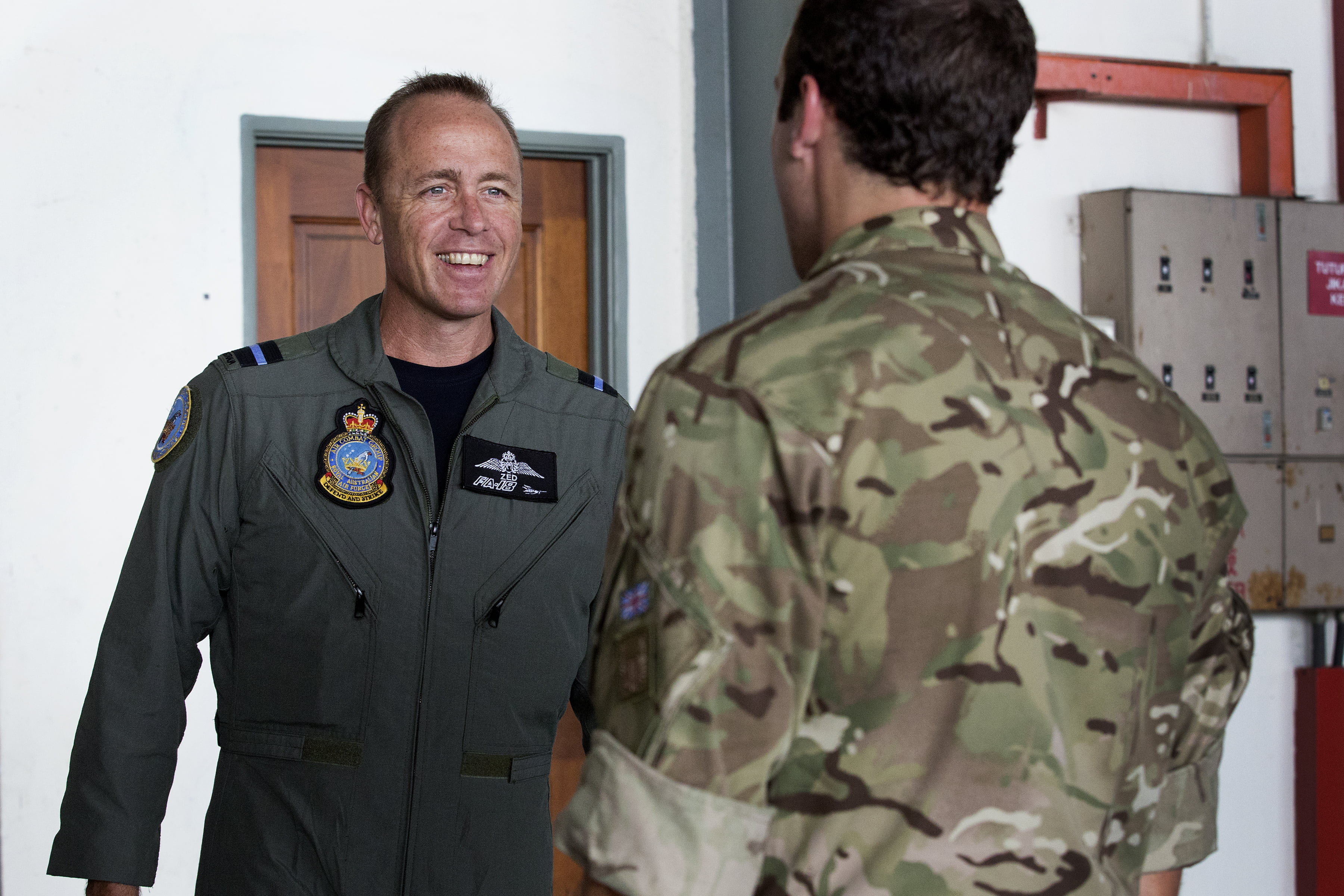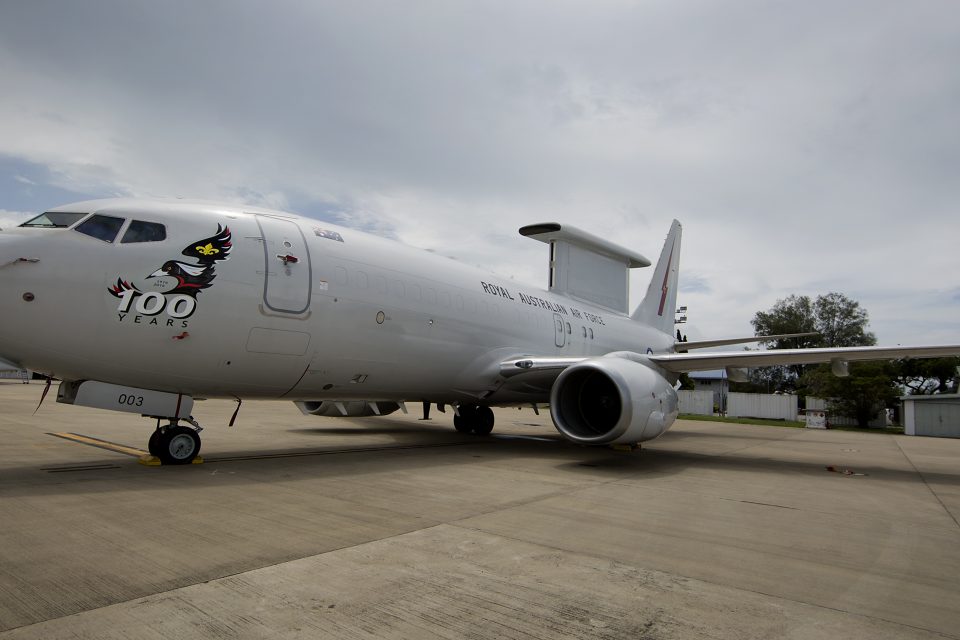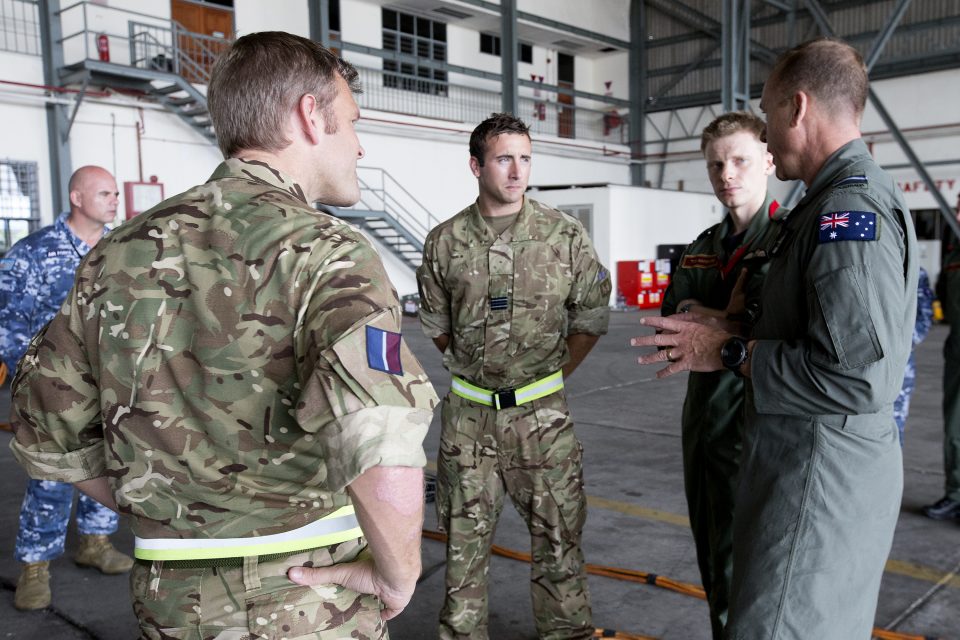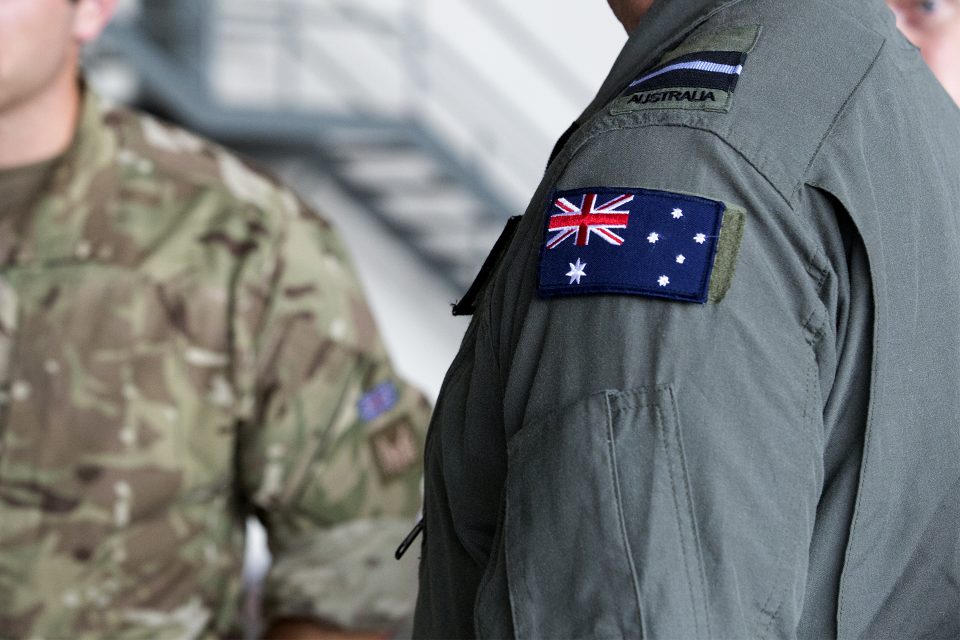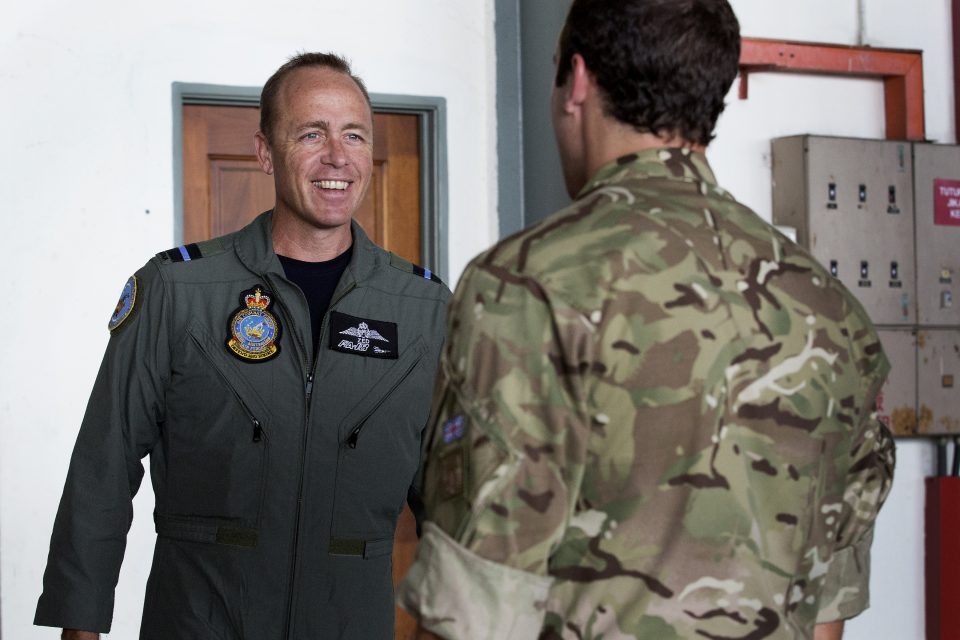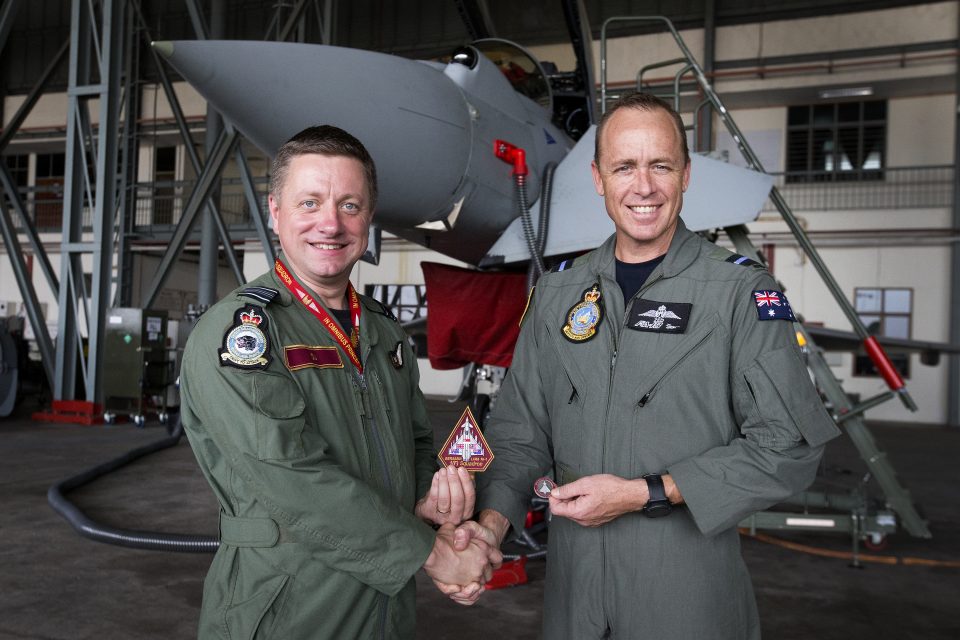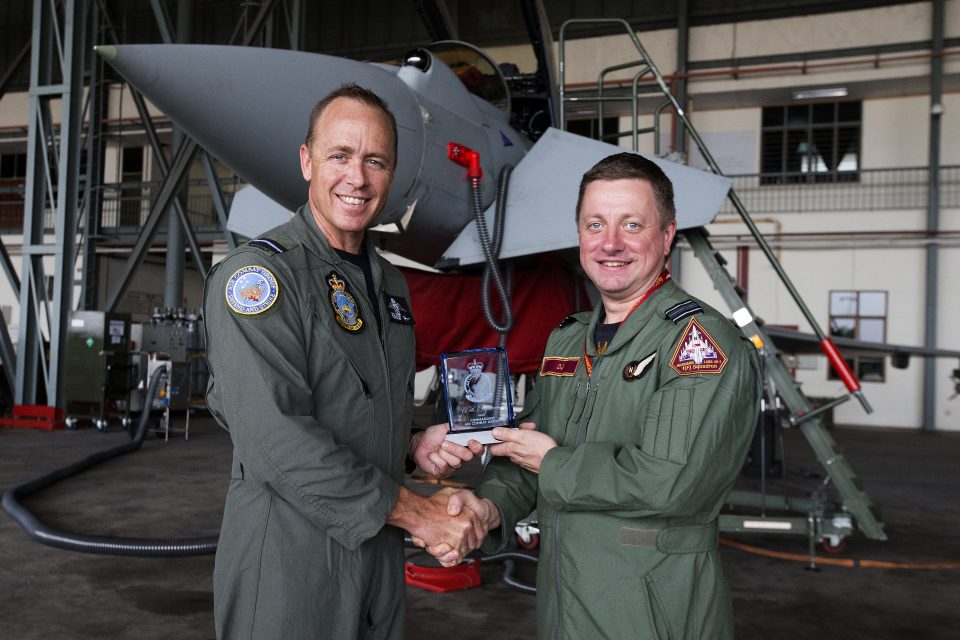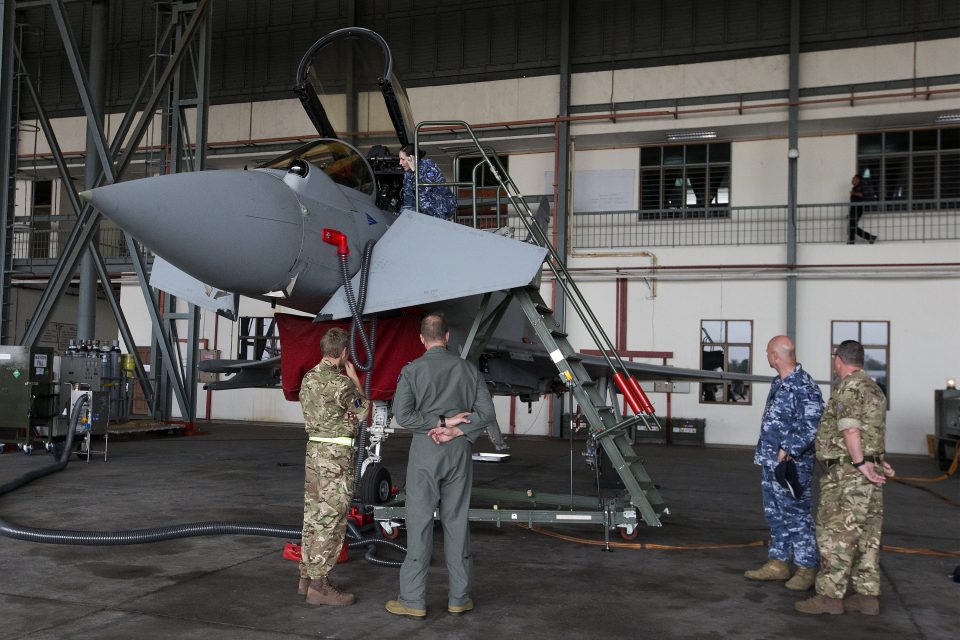2017-04-10 By Robbin Laird
During my visit to Amberley Airbase on April 3, 2017, I had a chance to discuss the work of the Air Warfare Center and of new training programs in the Air Combat Group to shape a more effective fighting force.
I have talked with Air Commodore Roberton in many places in Australia and he is clearly a force of energy on the move.
If he fights in an air battle like he operates on the ground, the adversary better be on his toes!
The last interview I did with him was in his office in Williamtown and focused the airpower transition which the RAAF is undergoing as it adds an impressive range of new platforms and capabilities.
The transition for Roberton is about shaping airpower for integrated operations in the information age; it is not about staying in the 20th century world of disaggregated air from maritime from ground forces.
It is about shaping an integrated force driven by the new fifth generation approach.
And for the RAAF, this approach is crucial because unlike the USAF or the USN, the RAAF does not have a large force of specialized aircraft to operate in an evolving approach to integration; the RAAF with the Navy and the Army need to lead a process of force structure integration shaped by a key driver like the F-35.
In this interview which was conducted at Amberley Airbase where the Super Hornet/Growler wing is located, we focused on how he saw that transition proceeding as the new Air Warfare Centre had been established and was positioning itself to be a key element in shaping the transition.
He emphasized that the focus was upon shaping an integrated air warfare perspective, moving beyond a platform specific context.
He thought it was proceeding well for two reasons.
“We are taking a kill web approach and working to integrate the non-kinetic into the force.
“We have to shape a cultural revolution.
“We need to get away from being comfortable with knowing what contribution my platform can make to the fight in very narrow terms.
“With the evolving concepts of operations, we don’t really care where the weapon comes from; we don’t really care how the information is passed.
“We need to have a framework where that’s devolved to the lowest effective level and we achieve it as a team.
“That’s kinetic and non-kinetic effects. That’s with regard to all different sorts of platforms.
“The faster you take a concept and a platform and weapons system and focus on its impact or effect at the tactical level, then the smart young women and men in our force will find a way to innovate in a way that we’ve never seen before.”
“That is really what we are after at the Air Warfare Centre.”
Indeed, according to Roberton, “we don’t want narrowly focused tactical operators.
“We want warfighters that can problem solve. That is why at the air warfare centre we give them problems they can’t solve.
“They’re wicked problems which require finding the best way to manage the problem going forward rather than tactically solving it in a narrow sense.”
As I had met earlier at the base with the Wing Commander who commands the Super Hornet/Growler squadrons, we naturally discussed the coming of Growler into the force from the warfighting rather than platform specific perspective.
Roberton argued “we bought Growler less because we wanted an electronic warfare platform than we wanted to get into a mindset and working relationship with the US which would translate into other platforms as well.
“We need to learn and expand into the broad non-kinetic warfighting area and acquiring Growler is a means to that end; it is not about simply operating an EW platform.
“It is about shaping a network of operators who can be informed by, and inform others in the ADF, how to broaden our non-kinetic warfighting skill sets.”
It is about generational and cultural change.
“By the mid-2020s we want to have leadership across the ADF that does not think in or stay in their tactical stove pipes.
“They need to think kill web as a foundational approach to everything they do.
“This is the only way a small country like ours can deal with the defense and security problems we face.
“We can not afford stove pipes.”
Finally, we discussed the innovative approach that the Air Combat Group is taking to enhance the ability to train pilots more effectively so that the proficiency levels remain high but that more pilots are graduated than previously.
How do you reduce the attrition rate in the training programs without reducing standards?
Or how to ramp up the pass rate of pilots to get better value out of the significant investments put into the pilot training programs?
At the end of this article, I have included two press releases issued in late 2016 by Air Combat Group which explain more fully the “re-role program for fast jet pilots.”
“We are simply not getting enough pilots through the training program, and we have looked hard at how we have done the training and have found that we can shift the training program to do a much better job of pilot training and retention.
“We have historically had a very rigid set of performance standards but by building a performance based system drawing upon principles of sports coaching we are graduating more qualified pilots than before.”
Pilot training is very expensive and traditionally the RAAF would take about 20% of the graduates of basic pilot training on to a track to be trained as fast jet pilots.
And traditionally, they would pass 50 to 60% of those pilots into fast jets.
“Now with a combination of initiatives we graduated 43 fast jet pilots out of 48 for around a 90% pass rate. Again, this is without loss in the quality level, but by having a more realistic and effective training program.”
The RAAF has adopted a new approach, addressing physical, mental and cultural changes as the key means to get these results.
“Innovative training is about taking more of a coaching approach to the task. It is also about giving our trainees the mental and emotional tools to cope with the stress and the challenges to a better job of self-improvement as well.”
He argued that the sports business has provided a number of tools which the RAAF has adopted for fast jet pilot training, including a physical endurance training approach to handling G tolerance.
“It’s a change in mindset of our instructors as well. Some of our instructors now are involved far more in a coaching role, as opposed to just straight instruction.
“They are looking at helping pilots go though the process with far less of a ‘testing mindset’ as their primary focus of attention. if you take the testing mindset out, people learn at different rates and you can accommodate that basic reality of teaching and learning.”
And this approach is paying off in operations.
Roberton noted that they are seeing enhanced pilot performance in operations like OKRA in the Middle East. “We have pilots who would have functioned as wing men, now taking a lead role because of improvements in their confidence levels and performance.”
In short, Air Commodore Roberton is keen to foster cultural change throughout the force, whether at the air warfare centre or in the training process.
Editor’s Note: Below are the December 2016 press releases about changes in the pilot training program.
Air Combat Group develops improved training methodology and new approaches to re-role program for fast jet pilots
Air Combat Group has developed and implemented new strategies aimed at improving both the quality and quantity of successful fighter jet graduates over the past two years. Air Commodore Steve Roberton said ACG was now looking to transfer those successes onto the long-standing re-role program.
“We are always on the lookout for new fighter pilots and have transferred a number of training support initiatives to 2FTS graduate and re-role fast jet trainee programs for 2017.
“We want women and men flying the next generation fighter jets such as F/A-18F Super Hornets, F/A-18G Growler and F-35A Joint Strike Fighter,’’ AIRCDRE Roberton said. ” There is nothing elite about our aircrew. They are simply focused young Australians who benefit from world-class training and cultural support. It is far more achievable than many young people think.”
The implementation of a structured and more thorough selection process for re-role candidates will be introduced to improve selection methodology, manage candidate preparations and enable individual trainee risk assessment and management,” he said.
This process will be supported by the delivery of Performance Enhancement Program (PEP) mentoring / coaching and a tailored preparation and induction program for re-role candidates prior to commencing their Introductory Fighter Course (IFC) at 79SQN.
“While still in their infancy, graduation numbers have been at historic highs with initiatives such as the PEP, fast jet trainee performance coaching/mentoring and 78WG Physical Conditioning and Injury Management Program (PCIMP).
“ACG has undergone a cultural change in the way we train fast jet pilots – even down to the language used in our training manuals,’’ AIRCDRE Roberton said.
“The current re-role paper based application process will be supplemented by a one week Fighter Jet Selection course to be held biennially at RAAF Base Williamtown,’’ he said.
“78WG will also develop a re-role preparatory course to be conducted at 79SQN utilising the new LIFCAP Simulator and basic skills assessment, PEP assessment of key mental skills, exposure to daily squadron working environments and visits/exposure to OCU and Op Squadrons.
“This will aim to familiarise successful re-role candidates with Pearce local area procedures, as well as refresh single pilot basics to a common level.
“The scheduling of preparatory training at 79SQN will remove the reliance on external agencies to ‘prepare’ trainees and therefore avoid the inconsistencies seen at present,’’ he said.
“The course will include some back seat Hawk flying for familiarisation purposes. The preparatory course will be unassessed and can be tailored to the perceived training risks of the re-role candidate (for example, single pilot IF or formation basics dependant on trainee background).
AIRCDRE Roberton said ACG intended to promote its changed processes, and would seek to raise awareness of these programs wherever possible throughout the recruitment and training continuum within Defence.
Proud fast jet pilots graduate to fly F/A 18A/B Hornets
Royal Australian Air Force Base Willliamtown has graduated eight proud young fighter pilots to fly the F/A 18A/B Hornet aircraft.
Commander of Air Combat Group Air Commodore Steve Roberton said Australia’s new fighter pilots, including two exchange pilots, had worked extremely hard over the past six months and should be proud of their achievements.
“This achievement is even more pronounced as 2OCU are about to graduate their third FA18A/B OPCON without loss of a trainee through failure.
“Air Combat Group has put into place a training approach that uses concepts around ‘performance’ or ‘sports psychology’ to enhance fighter aircrew training.
“This approach encourages fast jet aircrew trainees and instructors to learn about, and develop an understanding of the key mental skills for success in fighter aviation.
“The program also utilises select flying instructors as Performance Coaches in order for them to assist trainees to develop their mental skills during lead in fighter training and operational conversion courses.
“We also utilise professional psychologist support and supervision as a proactive measure to improve both trainee and instructional performance.
“Although it is early stages in the new program which was introduced mid-way through 2015, it appears to have reaped rewards already.
“The Commanding Officer of 2OCU throughout this time, Wing Commander Adrian Maso should be signalled out for his role in leading this cultural reform and the ‘hat trick’ of successful training outcomes in the FA18A/B Operational Conversion Course,’’ AIRCDRE Roberton said.
“The trainee pilots and instructors should be justifiably proud of their achievements,’’ AIRCDRE Roberton said.
Officer Commanding Number 81 Wing Group Captain Tim Alsop also congratulated WGCDR Maso’s approach to adopting a new training culture over his command.
“These graduating fight pilots will be put to the test when they join our operational Squadrons over the next few years.
“Australia’s new fighter pilots have an exciting future ahead.
“They have the opportunity to fly F/A 18 A/B Hornets, and F/A 18F Super Hornets – but also in the near future F/A 18G Hornets (Growlers) which arrive in Australia next year.
“The F35-A Joint Strike Fighter is also expected to arrive in Australia in late 2018, and these young pilots can expect to fly the fifth generation technology.
Editor’s Note: The slideshow above credited to the RAF shows the RAAF working with Malaysia and the RAF in an exercise last year.
The RAF described Bersama Lima 2016 and the RAAF participation as follows:
Air Commodore Steven P. Roberton, DSC, AM visited 1(F) Sqn while taking part in Ex Bersama Lima 16.
Image Shows: Air Commodore Roberton being shown around a Typhoon by members of 1(F) Sqn.
Air Commodore Steven P. Roberton is Commander of Air Combat Group (ACG), responsible for force generation and command of Australia’s air combat operations.
ACG comprises three wings encompassing Hawk Lead-In Fighter training and maintenance training; F/A-18A/B ‘Classic Hornet’ operations; and F/A-18F ‘Super Hornet’ operations; and Joint Terminal Attack Controllers and Combat Controllers.
8 Typhoon Aircraft from RAF Lossiemouth in Scotland are taking part in Exercise Bersama Lima 16 and will be based out of RMAF Butterworth in Malaysia during their stay.
Ex Bersama Lima 16 is an annual Five Powers Defence Arrangement(FPDA) Maritime/Air Field Training Exercise and Joint Post Exercise conducted to enhance the operability and mutual co-operation among the FPDA nations.
The exercise is sponsored on a rotational basis between the armed forces of Malaysia and Republic of Singapore and will take place between the period of 4-21 October 2016.
For the earlier interview, see the following:


